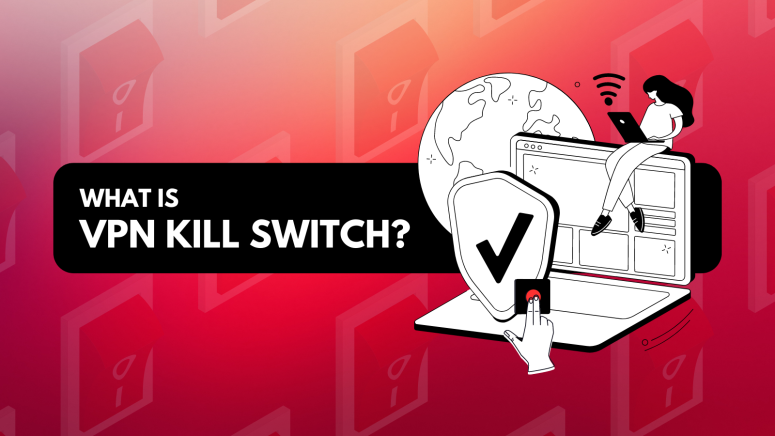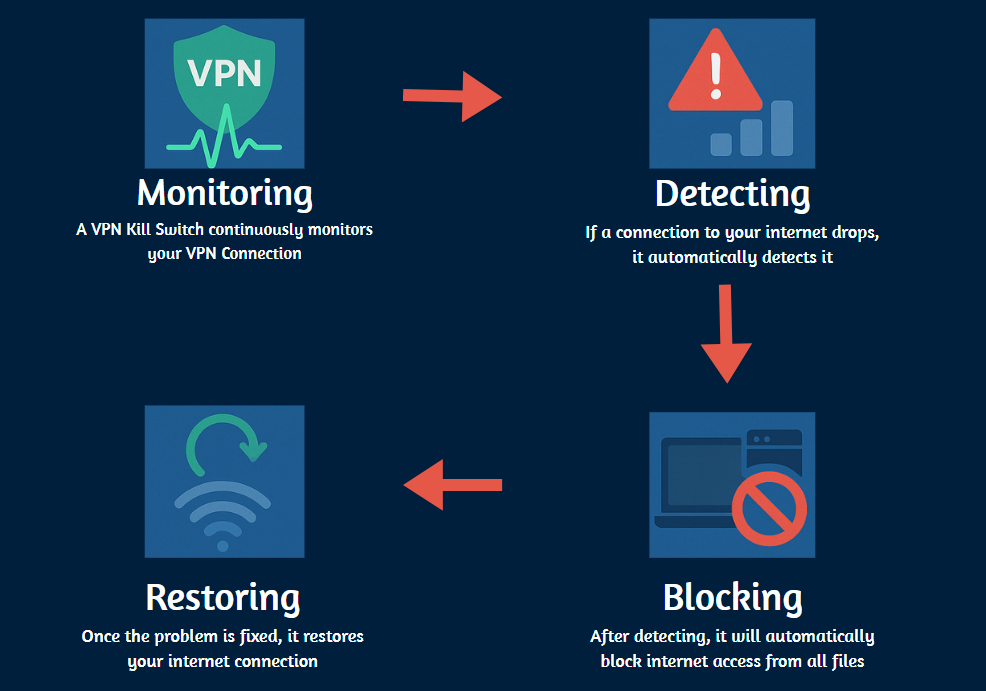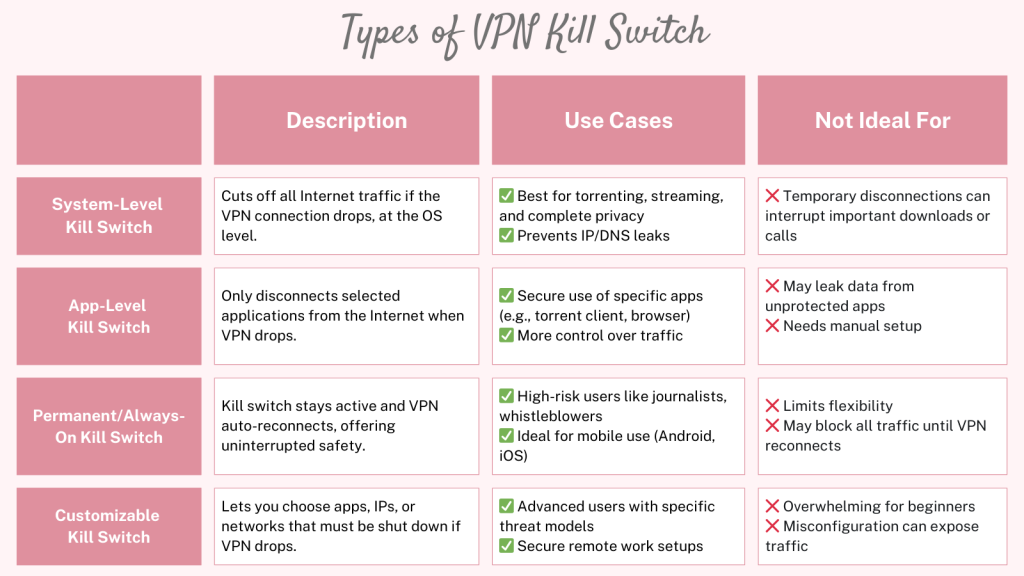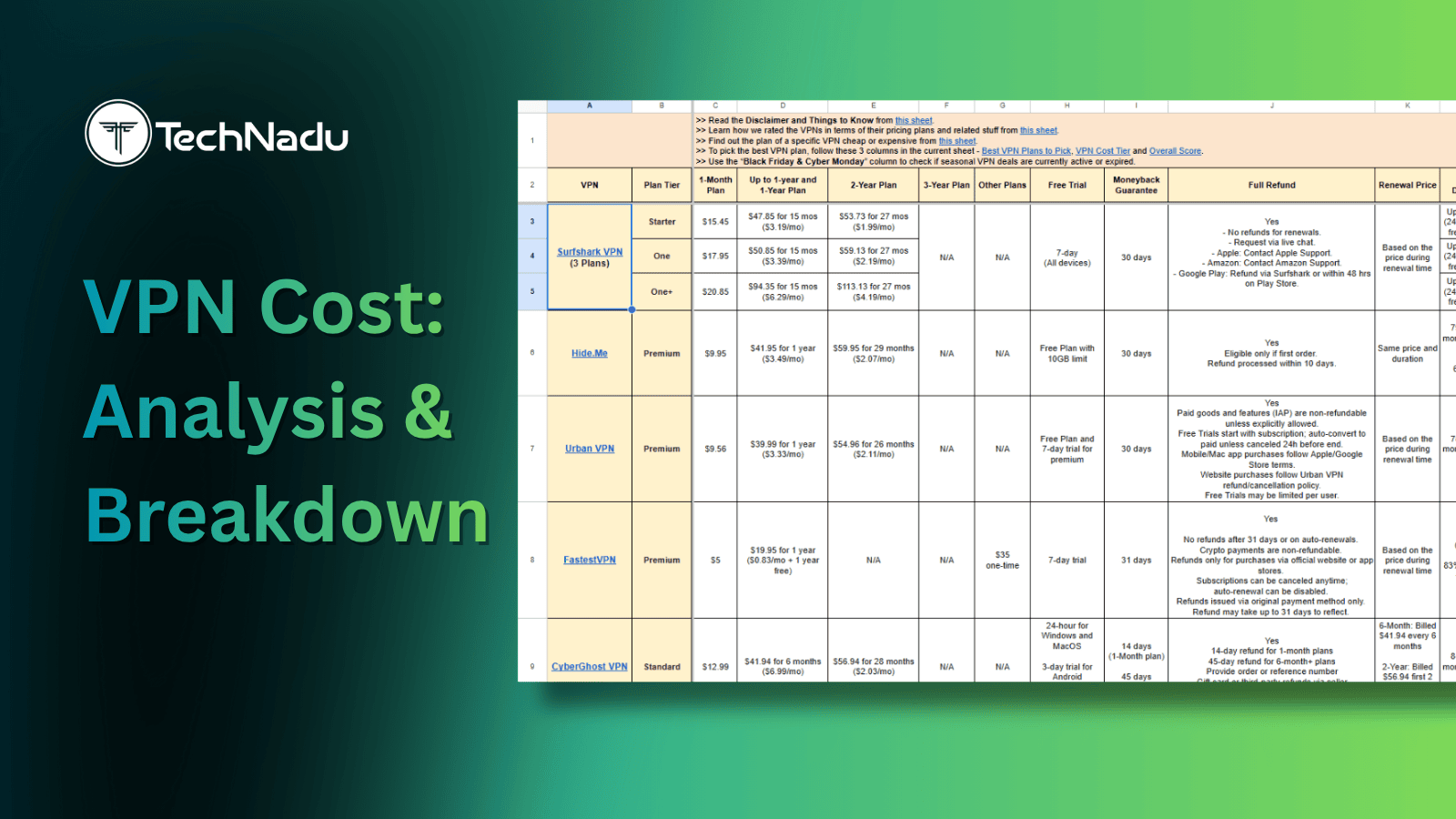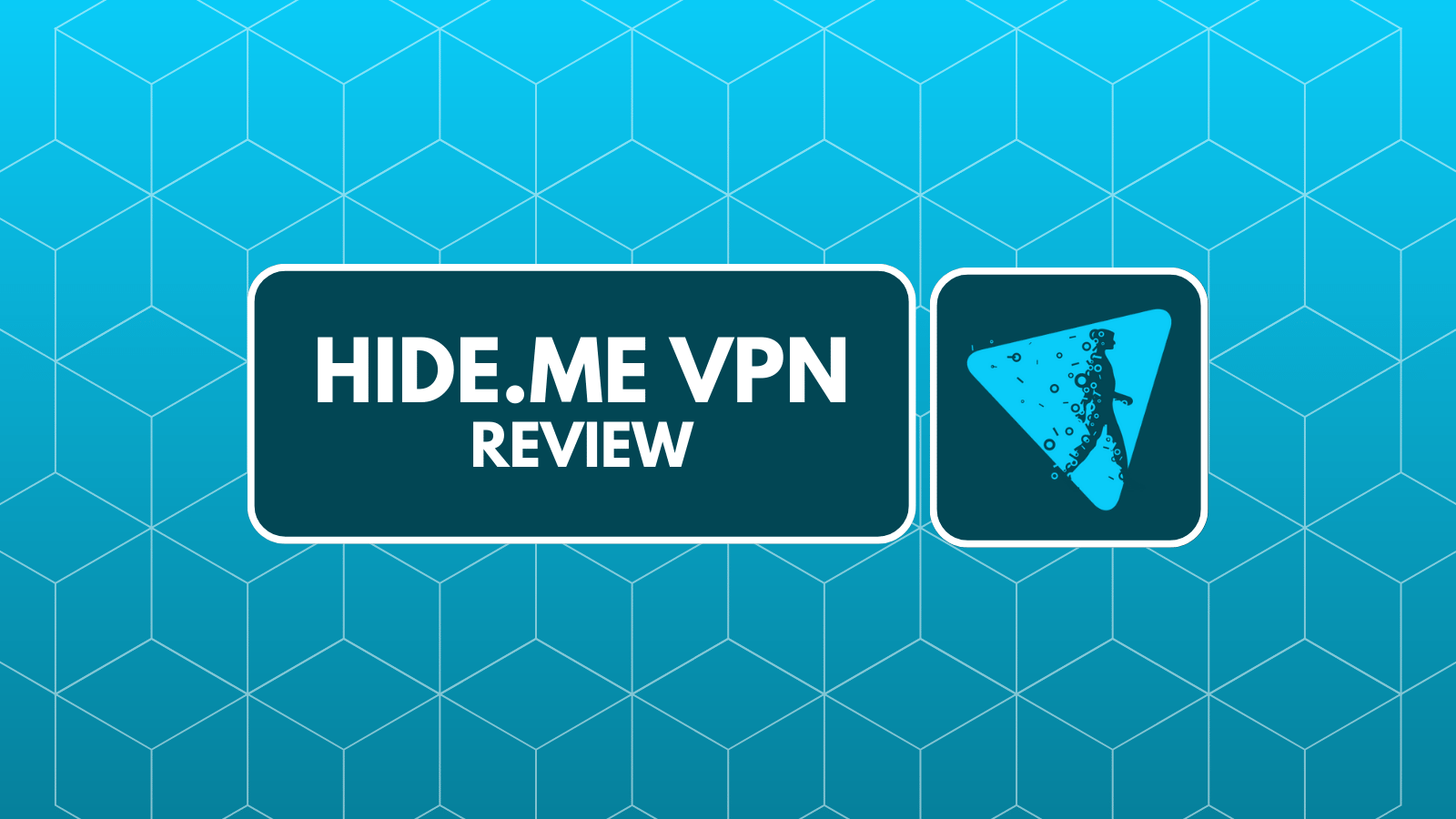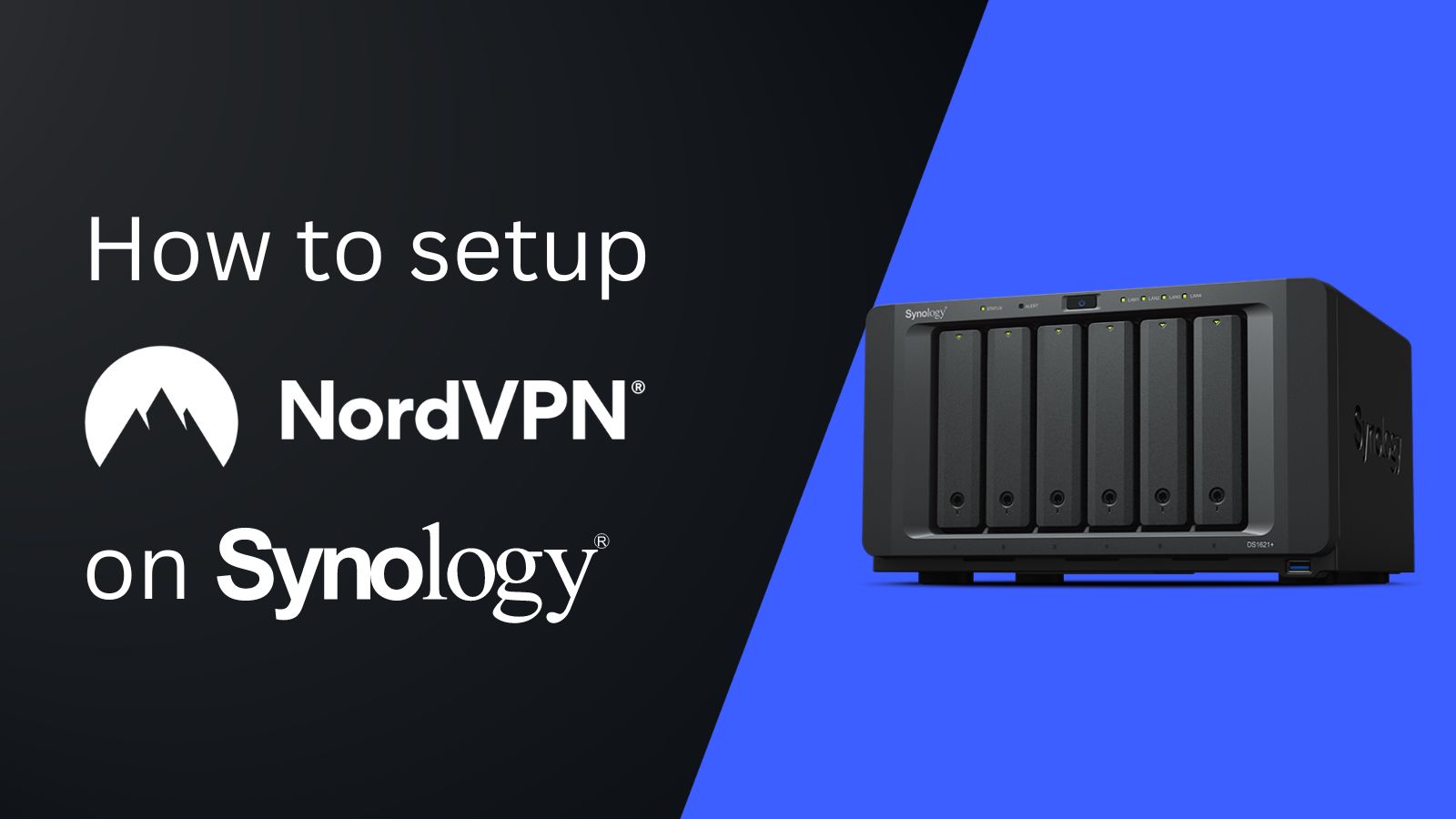
When you purchase through links on our site, we may earn an affiliate commission. Here’s how it works.
VPN Kill Switch – What Is It & How Does it Work?
A VPN kill switch helps prevent data leaks if your VPN abruptly disconnects. You can find it in almost any VPN app nowadays. But why is it so important? Well, that’s because a VPN kill switch protects your online privacy and keeps your Internet activity from getting exposed to your ISP.
For example, countries like the US and many EU countries block access to torrents. Of course, you can get around those blocks by using a VPN. But what if your VPN disconnects while you’re downloading a torrent file, due to a technical issue? Chances are that it will take a good couple of seconds for it to reconnect.
Without a kill switch, your torrenting activities will get exposed to your Internet provider in this short time frame. This means the government can take action against you if it wants to.
This is just one of the many situations in which a good VPN kill switch comes in handy. But how does this feature work, and how can you activate it? Also, which kill switch VPN should you choose? In this article, we will answer all these questions.
What Is a VPN Kill Switch?
A VPN Kill Switch is a highly useful method to safeguard your privacy. It is analogous to a firewall and monitors your VPN connection 24/7. And if a situation occurs where your VPN disconnects, the kill switch will block the Internet on your device (or specific apps) until the VPN connection is up and running again, thereby saving you from accidental data leaks.
Normally, capable VPNs have very stable and reliable servers. However, even the best VPNs can sometimes undergo technical issues, resulting in disconnections.
That’s where a kill switch becomes essential. Without it, if your VPN connection drops unexpectedly—even for a second—your real IP address could leak, exposing your identity and activity. Hence, in order to stay protected at all times, we strongly recommend that you enable the kill switch feature. It acts as a safety net, instantly cutting off your Internet if the VPN stops working, so your data never slips through unnoticed.
How Does a VPN Kill Switch Work?
A VPN kill switch runs in the background, monitoring your VPN connection constantly. If any issues are detected, it blocks your access to the Internet and later restores your connection once it's safe again.
We can generally divide its functionality into four stages; These are:
- Monitoring: A VPN kill switch continuously keeps an eye on your VPN connection to make sure that it’s active.
- Detecting: It detects changes affecting your VPN’s performance, such as disconnections.
- Blocking: Depending on your settings and VPN provider, a kill switch will block your device or specific applications from accessing the Web.
- Restoring: The VPN kill switch will automatically restore your Internet connection once the problem is fixed, and you won't have to take any other action.
The Different Types of VPN Kill Switch in 2025
As we have discussed above, a VPN Kill Switch is a vital safety net that protects your identity if your VPN connection unexpectedly drops. Without it, your device might revert to using your regular, unsecured Internet connection which might further expose your real IP address and online activity.
Now, Kill switches can be categorized in two ways—based on their scope (what they protect) and based on their mode of use (how they function). Understanding these types can help you choose a VPN that aligns with your privacy and usability needs.
Based on Their Scope – How Broadly It Protects Your Device
1. System-Level VPN Kill Switch
A system-level VPN kill switch completely blocks your computer's Internet connection until the VPN connection is re-established or the network adapter is reset. This is a highly effective way to prevent IP leaks.
Enabling a VPN kill switch is a simple process. Most of the capable VPN providers have a system-level kill switch enabled by default. But you can turn it off/on in the client’s settings easily.
2. Application-Level VPN Kill Switch
An application-level kill switch lets you choose the specific apps you want to safeguard using the kill switch. Whichever apps you have selected will then stop working in the event of a VPN connection failure, to protect your data. This is very handy if you want to hide your IP address while using certain apps.
Even though this type of kill switch may not sound as safe as a system-level kill switch, it is arguably the better option of the two. That is because it is limited to your specified applications.
Some frequently used apps for an application-level VPN kill switch are browsers like Chrome or Firefox, email apps like Gmail and Outlook, video calling apps like Skype and WhatsApp, and torrent clients such as uTorrent.
Based on Their Mode of Use– How It Reacts in Real-Time
1. Always-On Kill Switch
This type of kill switch is constantly active in the background. Once enabled, it won’t allow any Internet traffic unless the VPN is connected, be it before, during, or after a VPN session. You cannot accidentally disable it, making it the most secure option for users in sensitive regions.
2. Customizable Kill Switch
Some VPNs offer more user-controlled kill switches, letting you choose when it’s active, which apps it covers, or how strict it should be. These are ideal for advanced users who want to fine-tune their privacy settings.
Why Do We Recommend to Always Use a VPN Kill Switch in 2025
In a world where online threats are constant and privacy can vanish in seconds, a VPN kill switch acts as your last line of defense. Whether you're streaming, working remotely, or bypassing censorship, here’s why enabling a kill switch in 2025 is more important than ever.
1. Stay Safe When Torrenting
If torrenting is a sensitive legal issue in your country, you may be using a torrenting VPN for P2P downloads. But if your VPN connection suddenly drops, your actual IP address will get exposed to seeders/leechers. Your data will also no longer be encrypted.
So, your ISP might be able to catch you in the act if they inspect your traffic. A kill switch keeps you safe in such scenarios by blocking your Web access or access to your torrent client.
2. Protect Yourself From Traffic Leaks
A traffic leak happens when the VPN connection goes down and your information leaks out of the VPN tunnel. When that happens, your ISP can start monitoring your traffic, websites can see your real IP address, and advertisers can track your digital footprint.
With a kill switch, VPN leaks are no longer a problem since you will not stay connected to the Internet during your VPN’s downtime.
3. Don't Blow Your Cover
Let’s say you are a political dissident planning on escaping a totalitarian regime or sharing sensitive information about it with other countries. Or perhaps, a journalist who is about to blow the lid on a huge scandal.
In such a situation, a VPN disconnecting for even a few seconds can expose your identity and get you in trouble with the government. You can lose your job or your freedom. What's more, you might put your sources at risk of being discovered too.
A kill switch will offer you the extra security layer you need to keep anyone from finding out what you're up to.
4. Keep Your Competitor Analysis a Secret
Checking out your competitors' websites when you launch or revamp your own is a standard practice in market research. And you normally want to use a VPN to make sure they can't catch on to what you're doing by seeing your real IP address.
But if the connection goes down while you're on their website, they'll see it. And they can track it to your website, and start stealing your ideas (keywords, product features, website copy, and design, etc.).
Well, a VPN kill switch keeps all your digital research tactics safe by taking you offline when the VPN disconnects.
Pros and Cons of Using a VPN with Kill Switch
When Not to Use a Kill Switch
A VPN kill switch is great for privacy, but there are times when you may not need it or might want to turn it off. Let's analyze those situations when a kill switch might not be needed at all.
- Safe and Trusted Networks: If you’re at home or work using a secure network, you may not need the kill switch turned on all the time.
- Unstable VPN Connections: If your VPN keeps disconnecting on public Wi-Fi or mobile data, the kill switch can block your Internet again and again, which can be annoying.
- Normal Browsing: For simple things like watching videos or reading the news, a kill switch isn’t always needed. It may cut your Internet for no reason.
- Using Local Devices: If you need to use your printer or smart devices at home, the kill switch might block access to them.
- When Using Split Tunneling: If you’ve set some apps to skip the VPN, the kill switch might stop those apps from working too, which goes against what you want.
How to Enable the Kill Switch?
You can enable the kill switch by toggling a single button in your VPN client’s settings. In most cases, this feature comes built into most VPN apps, and there’s no need for complex configuration.
In this section, we will demonstrate how you can enable the kill switch.
1. Windows/macOS
- Open your VPN app (we highly recommend NordVPN).
- Go to the Settings or Preferences menu.
- Look for the “Kill Switch” option (Sometimes under sections like Privacy, Security, or Network Protection).
- Toggle it ON
- You may also find options to choose between a system-level or an application-level kill switch (depending on the VPN). Hence, choose the one that best suits your needs.
2. Android/iOS
- Go to Settings > Network & Internet > VPN.
- Tap the gear icon next to your VPN.
- Enable "Always-on VPN" and then "Block connections without VPN".
- Or, use the kill switch inside your VPN app (if available).
The Simplest Way to Check if the Kill Switch Is Working?
As mentioned above, a VPN kill switch is your safety net — it blocks your Internet if the VPN suddenly disconnects, keeping your real IP address hidden. But how do you know it’s actually working? Here’s a quick way to test it:
- Launch your VPN app & connect to a server.
- Go to settings and enable the 'Kill Switch' feature.
- Next, manually turn off the VPN connection by clicking on “Disconnect.”
- Open your browser and go to www.google.com or any website.
Now, if the kill switch is working, the website will NOT load. This is a good thing as it means your device’s Internet is blocked until your VPN reconnects, so your real IP address stays hidden. Additionally, even if your VPN's kill switch blocks the Internet when the VPN disconnects, it's still a good idea to double-check for any data leaks.
Final Thoughts
A VPN Kill Switch is a must-have tool for protecting your online privacy. If your VPN disconnects, a kill switch steps in and cuts off your Internet so nothing is exposed. It works quietly in the background and keeps your identity safe.
To give you that protection, VPNs offer different types of kill switches. Some block all Internet traffic across your device (system-level), while others only block specific apps you choose (application-level). You’ll also find “always-on” kill switches that stay active at all times, and customizable ones that let you adjust their behavior. Knowing how each type works can help you pick the right one based on your needs.
No matter what type you choose, using a kill switch is highly recommended in 2025. We highly recommend you go for NordVPN as it offers a highly-capable VPN kill switch paired with military-grade security. On top of that, NordVPN offers a whole slate of other features to help you browse the Web privately, stream media, download torrents, and more.
We hope that this guide answered all your questions about VPN kill switches and helped you understand their significance. If you have any questions, feel free to comment below.

